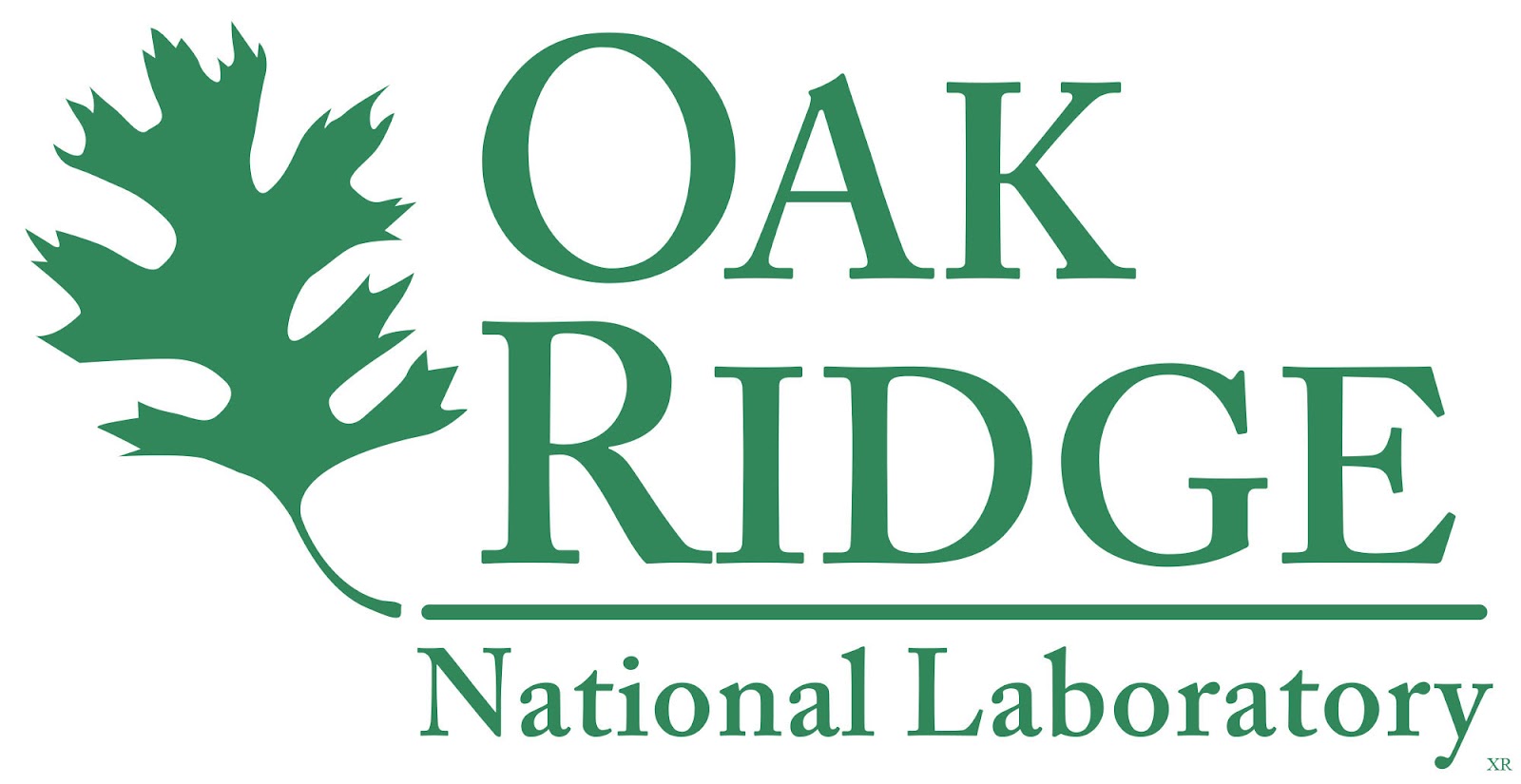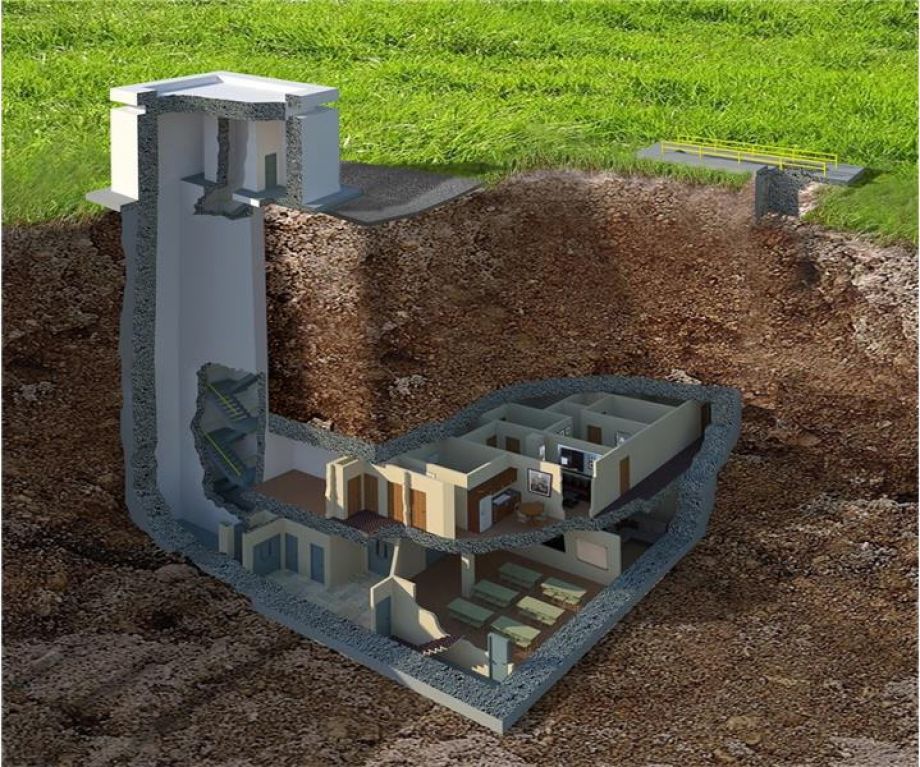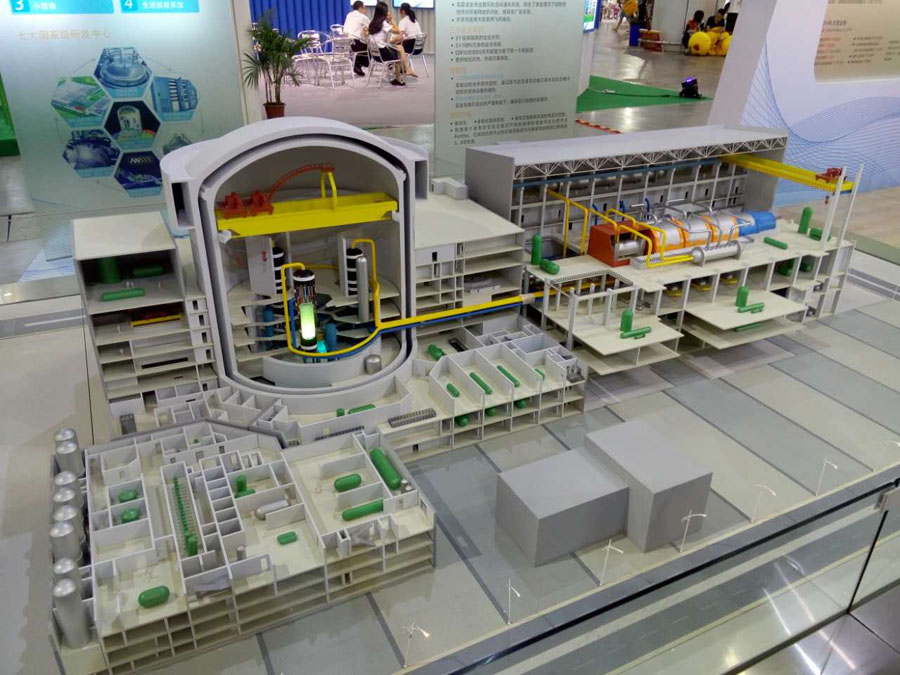
Blog
-
Geiger Readings for Jan 01, 2015
Ambient office = 119 nanosieverts per hourAmbient outside = 94 nanosieverts per hourSoil exposed to rain water = 81 nanosieverts per hourCrimini from Central Market = 119 nanosieverts per hourTap water = 74 nanosieverts per hourFiltered water = 69 nanosieverts per hour -
Oak Ridge National Laboratory Is Now Producing Plutonium-238 For Space Missions
I have blogged in the past about the U.S. shortage of plutonium-238. Plutonium-238 is an radioactive isotope of plutonium which is very useful in the construction of space probes for the exploration of space. It has a half-life of eighty eight years which means that its production of heat will take that long to fall to half its original output. “It is stable at high temperatures, can generate substantial heat in small amounts and emits relatively low levels of radiation that is easily shielded, so mission-critical instruments and equipment are not affected.” It is used to create radioisotope thermoelectric generators and radioisotope heater units that can last for years, providing power and heat to a probe as it carries out deep space missions.
During the Cold War, the U.S. nuclear weapons facility at Savannah River in South Carolina produced plutonium-238. This facility was shut down in 1988 as the Cold War was ending and the production of plutonium-238 stopped. The U.S. has been purchasing plutonium-238 from Russia since 1993 after domestic production ceased. Eventually, the Russians also stopped production and their stockpiles are running out.
The U.S. maintains separate stockpiles of plutonium-238 for military and civilian use. The current useful stockpile available to NASA is about thirty seven pounds. This stockpile will be utilized for a multi-mission radioisotope thermoelectric generator (MMRTG) for the 2020 Mars Rover mission and two more MMRTG for a 2024 NASA mission. There will be about nine pounds of useful plutonium-238 left after these two missions. Without a new source of plutonium-238, U.S. deep space missions would have to be seriously curtailed. Fortunately, the U.S. has begun making plutonium-238 again.
NASA began a new project to produce plutonium-238 two years ago at Nuclear Security and Isotope Technology Division at the Department of Energy’s Oak Ridge National Laboratory (ORNL). The Lab has just announced the creation of about two ounces of plutonium-238. The reactors at ORNL are smaller than the old Savannah River reactors and had to be modified in order to produce plutonium-238. Now that they have proven that they are able to make plutonium-238, they will work on scaling up the process to manufacture useful amounts of plutonium-238. This new production process will insure that the U.S. has sufficient plutonium-238 to carry out future space missions. The U.S. has some old plutonium-238 that has decayed past the point of usefulness. Fortunately, it can be mixed with newly-produced plutonium-238 to bring it back to “life.”
Boeing recently launched a satellite that utilizes a Variable Specific Impulse Magnetoplasma Rocket (VASIMR) engine. These engines are extremely efficient. “They use radio waves to ionize and heat a propellant, and magnetic fields to accelerate the resulting plasma to generate thrust.” These engines require energy to operate and plutonium-238 MMRTGs can provide that energy. In addition to being ideal for deep space probes, the VASIMR engines are being considered for launching a manned expedition to Mars. Current rocket engines would take six months or more to reach Mars, exposing the astronauts to unacceptable levels of radiation and requiring huge amounts of fuel. It is estimated that VASIMR engines could get a manned mission to Mars in about forty days which would be much more practical.
-
Geiger Readings for Dec 31, 2015
Ambient office = 77 nanosieverts per hourAmbient outside = 80 nanosieverts per hourSoil exposed to rain water = 93 nanosieverts per hourCarrot from Central Market = 102 nanosieverts per hourTap water = 46 nanosieverts per hourFiltered water = 39 nanosieverts per hour -
Nuclear Weapons 182 – Cold War Nuclear Bunker For Sale In Georgia
In October of 2014, there was an article in the Irish Times about a secret underground bunker in the state of George in the U.S. that could supposedly survive a twenty kiloton nuclear bomb explosion. In July of 2015, the Atlanta Journal-Constitution ran a story about “places in Georgia that you cannot visit.” Then, in November of 2015, there was series of stories in the media about the bunker. Depending on the news source, the value of the bunker is between five million and fifty million dollars. It is reported that the bunker is currently for sale for seventeen and one half million dollars.
When reporters tried to track down the seller, they ran into a few problems. The address given as 123 Private Dr. was obviously fake. The listing on the Harry Norman real estate website gave the name of the seller as Sister Hood. Attempts to reach Sister Hood at the phone number given went to voicemail and were not replied to.
Online research yielded the real street address and more details about the bunker including the name of a real estate agent, Dany Koe of Colliers International, who had previously listed the property for sale. When contacted, Koe said that he had visited the property. He thought that the current asking price was too high. He had had the property assessed as worth nine million dollars, had listed it for seven million dollars and had only had offers up to three million over the several years that he listed it. The co-owner of the property said that they had decided to sell only part of the property where the bunker was located which was why the offers were so low. Now they are selling the entire property.
Koe posted information about the bunker in a CNN blog in July of 2014. He said that the bunker was constructed by the U.S. Army Corps of Engineers in 1969. The bunker cost around nine million dollars to build. It was apparently part of a network of similar facilities that were intended to insure government communications in case of nuclear attack. AT&T operated the facility into the 1990s until it was decommissioned after the collapse of the Soviet Union and the end of the Cold War. In 2009, a company named Bastion Holdings purchased the property and ran it as a training facility for government and military personnel. In 2012, the property was renovated for about two and a half million dollars and then listed for sale.
This might be the ideal home for someone with a lot of money and a fear of nuclear war. Unfortunately, if nuclear war did break out, merely being in a buried bunker would not insure survival. The bunker would have to be outfitted with an independent source of power, industrial air scrubbers and filters, and sufficient stocks of water, food and medicines to sustain the people living in it for years. Eventually, after the supplies ran out or the equipment broke down, the inhabitants would have to emerge. They would find a devastated radioactive landscape with polluted water, air and soil, and billions of people dead. So much for survival.
Cutaway artist’s concept of the bunker:
-
Geiger Readings for Dec 30, 2015
Ambient office = 79 nanosieverts per hourAmbient outside = 122 nanosieverts per hourSoil exposed to rain water = 131 nanosieverts per hourMango from Central Market = 43 nanosieverts per hourTap water = 115 nanosieverts per hourFiltered water = 96 nanosieverts per hour -
Nuclear reactors 316 – The Chinese Have High Nuclear Ambitions
I have blogged before about China’s ambitious plans for expanding their use of nuclear power. The latest big Chinese five year plan covers from 2016 to 2020. The plan says that China is going to invest seventy eight billion dollars to build seven new reactors each year from 2016 to 2020. China will have eighty eight gigawatts of nuclear power by 2020 under the plan. Projected further into the future, China expects to have one hundred and ten nuclear reactors operating by 2030. Beyond that, China wants to spend up to a trillion dollars to generate two hundred and fifty gigawatts with nuclear reactors by 2050. Considering estimates of other countries projected use of nuclear power, the 2050 estimate would have China generating one fourth of the world’s nuclear power.
Currently, China has twenty seven operating reactors and twenty four reactors under construction. The Chinese government has approved the construction of six new nuclear power reactors based on the Chinese Hualong-1 design. Westinghouse Electric is a U.S. based nuclear technology company owned by Toshiba, a Japanese company. Westinghouse is scheduled to begin operating its first AP1000 pressurized water reactor in China in 2016. Westinghouse hopes that China will order ten more AP1000 reactors to be constructed in the next ten years.
China has ambitions to be the number one exporter of nuclear power reactors. They hope to export as many as eight Chinese designed reactors by 2020.
China has just signed a deal to help finance a new French power reactor at Hinkley Point in England. Part of the deal is reported to be permission for China to build a Chinese designed reactor in England. It is widely believed that this reactor is being built to be a demonstration model for the Chinese reactor export business.
Argentina is in negotiation with China to build its fourth nuclear power reactor. This reactor would be built by the same company that is building the Chinese reactor in England as part of the Hinkley Point agreement. The reactor will be based on a Chinese design and built by Chinese technicians. The agreement will be worth about five billion dollars.
One advantage that China has over its competitors for the international nuclear power reactor market lies in the fact that China has more forges than any other country. They have invested massively in industrial infrastructure. Forges are needed to make the steel pressure vessels that contain the nuclear reactor cores.
Another major advantage that China has is that it can construct nuclear reactors much more cheaply than competing countries. Six reactors being built at Yangjiang in southern China are projected to cost about twelve billion dollars in total or about two billion dollars each. Other nuclear reactor projects being sold by other countries cost about six billion dollars each. In general, single Chinese reactors are projected to cost at least thirty percent less than reactors from other countries.
It will be interesting to watch China attempt to meet its very optimistic goals for nuclear power, domestic and exported. Big nuclear projects are having difficulty finding sufficient funding these days. Often, the country constructing the reactor will offer a substantial loan to the country buying the reactor. The success of the Chinese nuclear export program will depend on the health of the Chinese economy which has been showing signs of weakness lately.
China has very serious problems with corruption which has led to serious problems in some construction projects. If a poorly built Chinese nuclear reactor breaks down and releases radiation, the international market for Chinese reactors could cool off very rapidly
Model of a Hualong-1 Chinese reactor:
-
Geiger Readings for Dec 29, 2015
Ambient office = 108 nanosieverts per hourAmbient outside = 94 nanosieverts per hourSoil exposed to rain water = 92 nanosieverts per hourRedlearf lettuce from Central Market = 113 nanosieverts per hourTap water = 121 nanosieverts per hourFiltered water = 118 nanosieverts per hour






